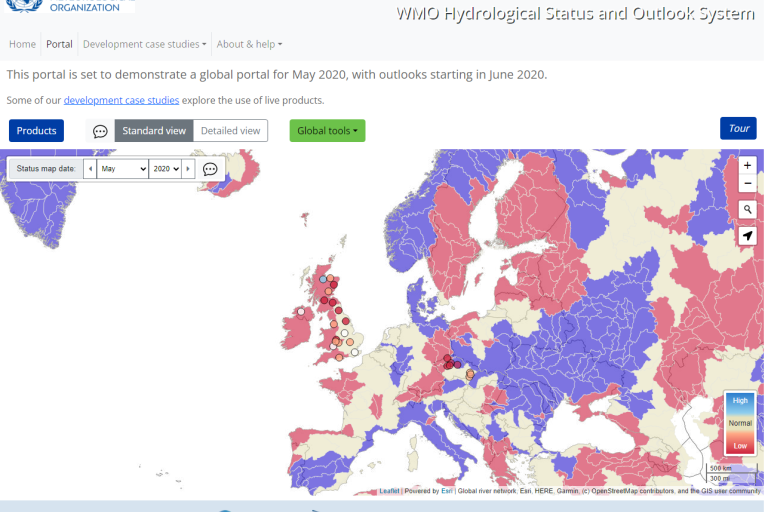Strategies for Implementing HydroSOS in the Regional Association VI

Water resources are crucial for human survival and economic development, and the need for accurate and timely information is increasing due to climate change and population growth. National Meteorological and Hydrological Services (NMHSs) play a vital role in providing this information, and the World Meteorological Organization (WMO) has launched the Hydrological Status and Outlook System (HydroSOS) initiative to enhance their capabilities.
On a national scale, HydroSOS will assist NMHSs in providing critical actionable water resources information to stakeholders from a variety of sectors. This includes agricultural, energy, and transportation industries, as well as government agencies in charge of water management and disaster risk reduction. Decision-makers can make informed choices and mitigate potential risks by understanding the current and future state of water resources. HydroSOS will improve NMHSs' ability to produce hydrological status and outlook information, allowing them to better understand how water resources in their river basins may change in the coming weeks and months. This will be accomplished through a combination of locally generated assessments and the use of downscaling global models. By combining these two approaches, HydroSOS will provide a comprehensive overview of the state of water resources, taking into account both local and global factors.
One of the key strengths of HydroSOS is its ability to complement other WMO activities, such as short-term flood forecasting, drought information systems, and long-term climate projections. By working together, these initiatives can provide a more holistic understanding of water resources and their potential impacts on different sectors.
As per the Resolution 5 Cg-Ext (2021), a Regional Association VI HydroSOS regional implementation plan has been developed by the RA VI Hydrology advisers under the leadership of the Regional Hydrological Adviser. It was endorsed in 2023 at the nineteenth session of the World Meteorological Congress. The implementation plan highlights the ongoing activities in the Region related to the HydroSOS supporting projects. It also provides a summary of the future plans, based on the priorities, existing capacities and gaps identified through the WMO Hydro survey in 2020 and the HydroSOS survey in 2023. The activities will strengthen the national and transboundary hydrological nowcasting and forecasting capacities and will also harmonize the existing products at a regional and global scale. It also involves the development and implementation of national projects, guided by the HydroSOS Technical Development Team, to build and operate HydroSOS within each country.
The HydroSOS initiative is an important step towards improving NMHSs' ability to provide accurate and timely water resource information. HydroSOS will provide a comprehensive overview of water resources and their potential impacts by leveraging both local and global data and analysis.
HydroSOS will ensure consistency and effectiveness at the regional and global levels through the regional implementation plan and capacity building efforts, ultimately benefiting various sectors and stakeholders. To assist with the implementation of HydroSOS, one of the five Regional Association VI priorities, the RA VI Management Group decided to form a Regional Association Task Team on HydroSOS.
